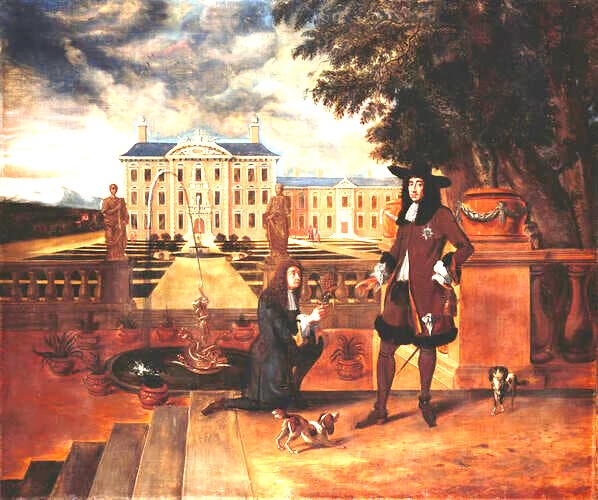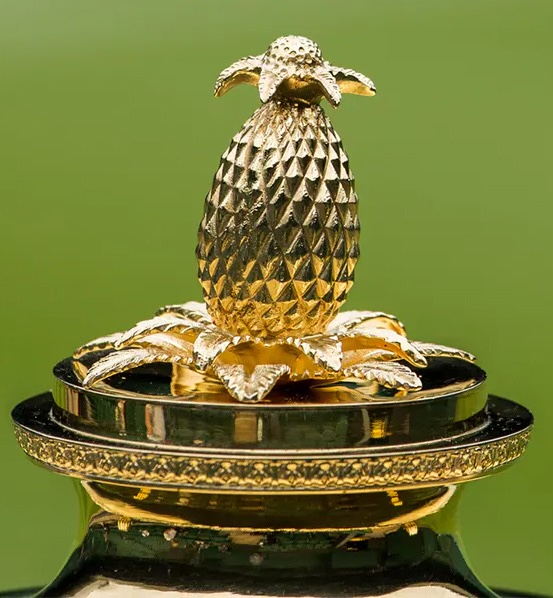Pineapples: From Royal Symbolism to Global Delight—A Journey Through the History and Culture of Meghalaya

News Mania Desk/Agnibeena Ghosh/30th July 2024
(Source: The Shillong Times, With inputs from C.K Nayak’s Sweet and Sour Pineapple Fest, Dilli Haat 2023, The Shillong Times, August 27, 2023)

The iconic painting ‘Charles II presented with a pineapple’ (c 1677) shows Charles II being presented with a pineapple by his gardener John Rose
A remarkable 17th-century painting by Hendrick Danckerts captures a fascinating moment in history where the royal gardener presents King Charles II of Great Britain and Ireland with the exotic fruit that would become renowned as the “king of fruits.” Commissioned by the king himself, this artwork was initially thought to commemorate the first pineapple cultivated in England. This unique fruit, often classified as a berry, made its European debut thanks to Christopher Columbus’s voyage to Guadeloupe in the 15th century. With its distinctive crown-like top and tropical flavor, the pineapple quickly became a symbol of status and luxury among Europe’s elite. The Fibonacci sequence pattern found in pineapples even inspired architectural elements, including the western towers of St. Paul’s Cathedral in London and the Wimbledon Gentlemen’s Singles Trophy.
Pineapples are not just symbols of opulence but also represent peace, prosperity, and hospitality. In Meghalaya, the pineapple holds special significance, especially the sweet ‘kew’ variety. The recent Meghalaya Pineapple Festival, held from July 10 to 14 in Dilli Haat, Delhi, showcased this pride, with over 6.5 tonnes of pineapples sold. The festival, now in its second year, saw an increase in exports from the state, with nearly 9-10 tonnes of pineapples shipped out. The Kew variety is also available at Safal Mother Dairy outlets in Delhi, promoting local farmers’ produce and expanding market reach both domestically and internationally.

The iconic painting ‘Charles II presented with a pineapple’ (c 1677) shows Charles II being presented with a pineapple by his gardener John Rose
Meghalaya ranks as the fifth-largest pineapple-producing state in India, following West Bengal, Assam, Karnataka, and Tripura. The cultivation of pineapples began in Brazil before spreading to other tropical regions. Christopher Columbus’s introduction of the pineapple to Europe in the 15th century was followed by the Portuguese bringing it to India in 1548 AD. Europeans became enamored with this exotic fruit, with British colonist Richard Ligon famously praising the pineapple as superior to Europe’s finest fruits. However, Europe’s climate proved unsuitable for cultivating pineapples, necessitating imports from the New World.
In European high society, pineapples became prestigious status symbols. Their striking appearance, with a crown-like top, made them coveted display items at social gatherings. Some individuals even rented pineapples for their events, carrying them as symbols of affluence. The fruit’s allure extended into art and architecture, with pineapples appearing in sculptures, civic buildings, and private estates. The Wimbledon Gentlemen’s Singles Trophy, introduced in 1887, features a pineapple motif, reflecting its historical significance as a rare and luxurious item during that period.
In India, particularly in the Northeast and Peninsular regions, pineapples are valued for their unique taste and quality. The longer maturation period of these pineapples, taking nearly two years to ripen, contributes to their distinctiveness. This extended growth period results in a strong natural defense mechanism against predators, including sharp leaves and a rough, spiky skin. Additionally, the fruit contains bromelain, an enzyme that breaks down proteins and contributes to its reputation for causing a tingling sensation in the mouth.
Despite these natural defenses, pineapples offer numerous health benefits to humans. They are rich in nutrients, low in calories, and high in vitamins and minerals. Bromelain aids in reducing inflammation and supports muscle recovery, while the fruit’s high vitamin C content provides antioxidant protection. Pineapples are also believed to be natural aphrodisiacs, further fueling their global demand. Meghalaya’s Kew pineapples, cultivated organically and without pesticides, continue to enjoy growing popularity both in national and international markets, showcasing their exceptional quality and cultural significance.






